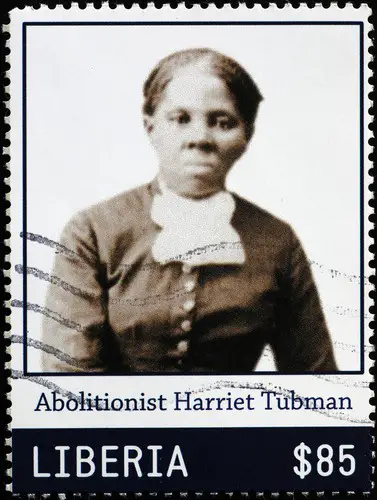5 Of The Most Heroic Acts In History
Heroic acts are always a sight to behold! Heroism is great bravery, and bravery is something that we can all be inspired by . If you’re looking for heroic acts that are inspirational on a colossal scale, then this post is perfect for you.
Here you’ll find 5 of the most heroic acts in history, to hopefully inspire some of the courage that is inside you out into the world!
When you read of genuine heroism like the examples given below, you cant help but be encouraged by the potential for greatness that is within us all.
I hope you find this to be deeply inspiring.
5 Of The Most Heroic Acts In History

- The village of Eyam (An entire village sacrificed themselves to stop the spread of the black death)
- Harriet Tubman (A slave who risked her life to help 70 other slaves escape to freedom)
- Alfred Vanderbilt (A young millionaire who gave up his lifeboat to save women and children)
- Irina Sendler (A nurse who helped smuggle thousands of Jewish children out of Nazi ghettos)
- Aitzaz Hasan (A schoolboy who tackled a suicide bomber to the ground outside of his school)
1. The Village of Eyam
To start today’s list, let’s travel back in time to 1600s England, and more specifically, the village of Eyam. The year is 1665, and the plague, or ‘Black Death’ as it became known at the time, was sweeping across Europe and killing people on a scale never before seen.
A bale of damp cloth arrives in Eyam from London for the local tailor. Little did anybody know, fleas were also part of the shipment. Today we know that fleas were the primary way the plague spread, biting people and infecting them. Very few people survived the Black Death and millions were killed in total across Europe.
When the tailor hung out the damp cloth to dry, the fleas were unintentionally freed and infected the village. The tailor himself died after only a few weeks, alongside 42 other villagers. It’s important to note that there were only approximately 800 villagers at the time, so people knew that the plague had arrived in the village and they knew what that meant. Certain death.
Naturally, villagers’ first reactions were to flee, to leave the village behind and seek refuge nearby. William Mompesson, a local clergyman, spoke before the entire village before anybody could leave, however, and convinced them that they had a duty to the nearby villages and towns to stay put. He suggested that they all remain in Eyam, to avoid spreading the plague further and killing others.
And everybody in the village agreed.
In all, around 260 of the 800 or so villagers had died by the summer of 1666, and despite every family being affected in some way, and the local fear of who might be lost to the dreaded plague next, the village remained quarantined.
Acts of heroism throughout history so often refer to one person or a small group of people, but rarely do you see an entire village sacrificing themselves to save others. It’s also important to remember that this heroic act is also an example of heroism through inaction. Fleeing was a natural response to danger in this case, but everybody agreed to stay where they were for the greater good.
If we all could think of how our actions might affect others for better or worse, just as the village of Eyam had done in 1665, then the world would certainly be a better place.
Check out this video which tells the full story:
Read also: Setting goals is the first step in turning the invisible into the visible
2. Harriet Tubman
Let’s fast forward to the year 1849 and travel to the United States. Most people will have heard of the incredibly brave and selfless Harriet Tubman, but if you haven’t, then this story is sure to inspire heroism within yourself when you learn all that this incredible woman risked to help others.
Harriet Tubman was born and raised a slave, but she was strong-willed and determined to fight against the injustices she faced on a daily basis. She had initially escaped slavery on September 17, 1849, along with her 2 brothers, when they were sent on loan to a plantation in Caroline County. But after a runaway notice offering $100 for each slave returned was posted, her brothers feared for all of their safety, and convinced Harriet to return.
Such was her determination though, she escaped again soon after, but this time she fled alone. Using the network known as the Underground Railroad, made up of fellow free and enslaved black people, abolitionist white people, and other activists fighting to end slavery in the southern states, Harriet eventually made it to Pennsylvania.
But she did not stop there, despite the passing of the Fugitive Slave Law of 1850, which said that law enforcement in ALL states, even northern states where slavery had been abolished, were forced to capture and return escaped slaves to their ‘owners’ – wherever that may be. That meant that if Harriet was caught at any point thereafter, she would be returned to her life of slavery.
Even so, she remained determined.
From her escape in 1849 to her final rescue mission in 1860, Harriet Tubman returned to the southern states and guided 70 slaves to freedom over 13 expeditions, including her family. All this, despite knowing that if she were caught, she’d be forced to return to her former ‘owners’ and likely tortured and punished.
Words cannot adequately describe how these heroic acts at a key point in history impacted on the lives of others. Not just the 70 slaves Harriet led to freedom, but the impact on fellow slaves, struggling for hope, who heard stories of Harriet’s work and knew that the beginning of the end of slavery for them was finally here. Harriet Tubman saved many lives directly, but she also helped ignite the fire of life in many others who had lost hope that freedom was an option for them.
Harriet Tubman is a hero because of her determination to challenge injustices, no matter the personal risk. If we speak up when we see an injustice, no matter how small that injustice may be, and take action against it, then we can genuinely all be heroic by its very definition.
This brilliant animation summarises the life of Harriet Tubman:
3. Alfred Vanderbilt
When we imagine heroic acts, we often imagine it as being from people who face injustices, or are in someway the ‘underdog’ in a situation. But Alfred Vanderbilt is the perfect example of a man who was privileged, but never saw himself as more important than others.
You see, Alfred Vanderbilt was born in New York, 1877, into a VERY privileged family. So privileged, in fact, that between his grandfather and father, the family had already amassed an estimated $72 million (in today’s money) between them, leaving it all to Alfred after their deaths. And Alfred lived well, building a reputation for himself as a party-mad, globe-trotting, womanizer with a keen eye for investment and business opportunities.
But it wasn’t until 1915 that Alfred Vanderbilt’s true colors truly shone for the first time. Yes, he was one of the world’s richest men and his reputation still proceeded him wherever he went, but that didn’t stop him from performing one of the most selfless heroic acts of history when he was faced with mortal peril.
On May 7th, 1915, Alfred was onboard the Lusitania bound for Britain after leaving New York. Alfred was headed to Britain to attend the meeting of the International Horse Breeders’ Association (horses were an area he invested in occasionally). Despite the trip taking place during the First World War, Alfred and his fellow passengers assumed they’d be safe as a civilian ship, but the 7th of May, 1915, proved them all wrong.
Just off the coast of County Cork, Ireland, the Lusitania was set upon by German U-boats and the ship began to sink. As a First-Class passenger, Alfred Vanderbilt was given a lifejacket. Regular passengers were not, so Alfred gave his away. As a First-Class passenger, Alfred Vanderbilt was allowed priority access on to a lifeboat to head to safety, but he refused. Instead, he stayed on the sinking ship to ensure as many children as possible got on to the lifeboats.
Vanderbilt was still putting children on to lifeboats when the ship sank under the waves, and his body was unfortunately never found. Despite being a relatively young man in his late 30s, Alfred Vanderbilt sacrificed himself to save the lives of countless others. Despite being a successful businessman and one of the world’s wealthiest men, Alfred Vanderbilt gave away the gifts his privileges afforded him to make sure that others escaped before him. It cost him his life, but his legacy remains because of the lives he saved that day.
We can’t all show selflessness on such a grand scale as Alfred Vanderbilt did that day, but we can all certainly take a look at our own privileges, and wonder if perhaps we could pass them on to somebody else to make their day better. Giving up your spot on a lifeboat to save others and giving a struggling person on the street your sandwich might not be on the same scale of heroic acts, but they come from the same place of respect for our fellow human beings. Besides, a small heroic act is still a heroic act, and just as important to the person it benefits.
Read also: Mental Strength vs Physical Strength
4. Irena Sendler
There are countless acts of heroism during the Second World War, so picking just one to share with you was difficult. But despite there being many heroic acts throughout this troubling time in our world history, it’s Irena Sendler’s heroic acts that stand out as being representative of the human spirit and bravery that defined this period.
Irena Sendler was a Polish social worker in 1939 when the Nazis invaded her home country. When the Jews were rounded up and placed inside a ghetto with high walls to prevent escape, Irena knew what was to come. Rather than sitting back and allowing the terrible things she feared were coming, she took a stand.
Joining the Polish Underground Resistance, Irena managed to get credentials as a nurse, so she could enter the ghetto and help look after the sick, injured, and dying. Nazis restricted how much help she could be, but Irena smuggled in medicine and food to help where she could. But it was perhaps what Irena Sendler took out of the ghetto that was more important than what she took in.
Irena was not just willing to make life bearable for the Jews inside the ghetto. She was determined to save as many lives as she could. Along with fellow coworkers who had also joined the Polish Underground Resistance, Irena smuggled children out of the ghetto, often sedating them to keep them quiet to avoid suspicion from the Nazi guards as she hid them in burlap sacks or inside large toolboxes to get them out of the ghetto. In total, Irena and her group saved approximately 2500 children by helping them escape the ghetto between 1939 and 1943, when the operation was eventually found out.
And if this selfless act of bravery and defiance in the face of hatred wasn’t enough, she also helped the children escape to Christian orphanages and like-minded families, where they were given new identities to hide their Jewish heritage from the Nazis who would have otherwise persecuted them. But such was Irena’s character, she wrote down the real names of every child she helped and buried it in a jar in her garden so that one day she might be able to reunite surviving family members with their children. Unfortunately, this proved almost impossible after the war, but she nevertheless dedicated the rest of her life to trying to reunite the families torn apart by the Nazis’ hatred.
Irena Sendler was eventually caught, imprisoned, and tortured terribly by the Nazis for all she had done on October 18th 1943. But she survived, later dying in 2008, and is remembered to this day as one of the great unsung heroes of the Second World War.
Such bravery wasn’t rare during the Second World War, because it’s often during times of war and worldwide terror that people show what they’re truly made of. That’s certainly true of Irena Sendler, who, along with her comrades, saved 2500 Jewish children from the Nazis’ clutches. But heroic acts aren’t something that only occur during times of trouble. You don’t have to wait to be called upon in terrible times to be a hero. If you can make a difference to one person’s life today, just one, then you’re already a hero to those you help.
5. Aitzaz Hasan
It’s easy to find examples of heroic acts throughout history, but that doesn’t mean we have to rewind 50+ years to find it. Aitzaz Hasan proved in 2014 that no matter who you are, you can be a hero, and his actions are just as heroic as all those who came before him. This story is inspirational because it shows that heroism is not a thing of the past. It is alive and well today, and it’s living inside all of us. Aitzaz Hasan was 15 years old when he displayed an act of heroism that might be expected of a seasoned veteran in the army, but certainly not of a schoolboy.
On the 6th of January, 2014, Aitzaz was running late for school in the Hangu district of Pakistan, when he saw an older looking man in school uniform acting suspiciously by the school. Aitzaz and his two friends became suspicious of the man, and when they tried to stop him, the man began to walk faster towards the school gates. Aitzaz picked up a rock and tried to throw it at the man, which missed, prompting the man to head towards the school even faster. It is said that this is when one of the boys noticed a detonator on the suspicious man’s person.
It’s important to note that suicide bombings were rife in Hangu, Pakistan, where this incident took place, and so the teenagers likely knew what a detonator meant. But that didn’t stop Aitzaz Hasan from doing something incredibly brave.
Rather than running away from the obvious suicide bomber, Aitzaz instead chased after him. After catching up with the man, Aitzaz bear hugged him and tackled him to the ground. Nobody knows for sure what happened next, but the result was the bomb detonating, and both Aitzaz and the bomber were killed in the incident.
At the time, the high school had hundreds of students, and by Aitzaz’s actions, nobody besides himself and the bomber were killed or injured in the attack. Aitzaz Hasan gave his life to save others on January 6th 2014, in all likelihood knowing exactly the risk he was taking by tackling the suicide bomber, but doing it anyway to protect others. His bravery isn’t something you can put into words, but his classmates paid tributes to a brave and good boy that displayed a remarkable lack of selfishness to put others before himself. In honor of Aitzaz, his school has since been renamed the Aitzaz Hasan Shaheed High School.
Aitzaz Hasan shows us all that no matter how old you are, who you are, or where you are in the world, there’s a hero inside all of us. Aitzaz teaches us that you don’t need to look too far into the past for heroic acts or sources of inspiration when you want to do the right thing, because heroism is everywhere, even today.
Take-Home Message
The 5 heroic acts featured in today’s post are huge. There’s no denying that. But that doesn’t mean we can’t take inspiration from them in small ways to change lives today. Thankfully, very few of us will ever have to sacrifice ourselves for others in the same way as Aitzaz Hasan, Alfred Vanderbilt, or the village of Eyam. And hopefully none of us will ever have to risk our lives to save others in the same way that Irena Sendler and Harriet Tubman did. But we can all learn from their stories and vow to help others wherever we can, whenever we can.
Enjoyed this article? Check out some of our best
How to become ambitious and motivated






